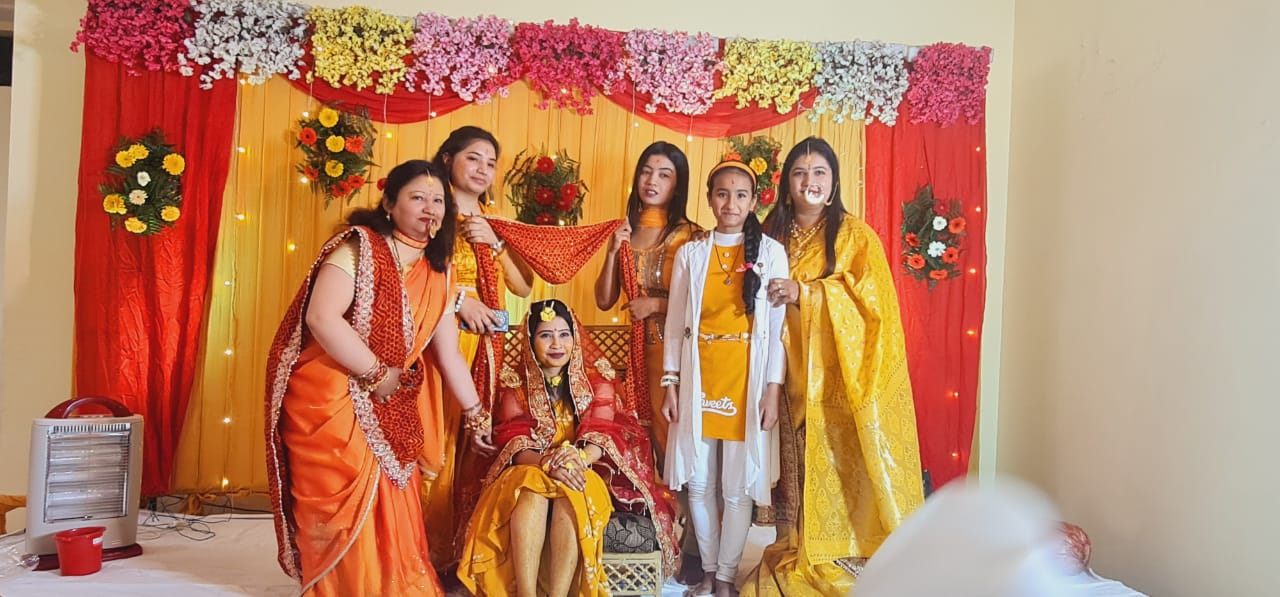
Highlights and Rituals from Kumaoni Wedding
A wedding is a ceremony where two people take vows for getting united for their life. It is an embodiment of love and seeing two people swearing to love each other be together until death part them is simply amazing. Wedding rituals, traditions, and practices vary with the countries, social classes, religions, cultures, and regions. Majority of wedding ceremonies involves couple taking wedding vows, exchanging rings, garland, or dress. They rightly say, “A successful wedding needs falling in love many times, with the same person.”
India is a land where people follow diverse cultures, traditions, and religions. From that diversity, here we have Kumaon where the wedding rituals and traditions are quite different from any other Hindu wedding in India. Kumaoni wedding is truly a relish to grace with your presence. It is a graceful wedding intertwined with the delightful culture of a pleasant and peaceful region. Not just Kumaoni, all weddings in Uttarakhand are held like a grand gala, where you get a chance to meet your relatives, friends, and family living far from each other. A wedding here in Uttarakhand is a grand get-together.
There are some peculiarities, about Kumaoni wedding, which makes it different from others. Let us have a glimpse of those –
- Every Indian woman knows how to impress everyone by dressing up in the traditional way. And when it is about Pahadi women, they leave no stone unturned by capping themselves in their best outfits, complimenting it with traditional Pichora and Nathuli. This comes out as one of the major attractions of a pahadi wedding.
- The dishes prepared in any wedding held out in pahadi or Kumaoni region, are quite tempting. No one can hold himself or herself from having such yummilicious food enriched with exotic flavors.
- The major attraction of all in a Kumaoni wedding is the giant traditional touch Pahadi Nath or “Nathuli”. This old-style Nathuli has become fashionable jewelry among the brides in Uttarakhand. Almost every Pahadi bride can be noticed wearing this on her wedding day.
- The Kumaoni brides wear a beautifully embroidered drape known as Pichora and married women since it is an indication of being married. It is a kind of legacy that is transferred from one generation to another and is the only native attire of a bride’s wedding dress.
Traditions & Rituals followed in Kumaoni Wedding
We all are aware of how unique and admirable Pahadi weddings are and how ravishing it is to be a part of that. If you want to tie the knots within a Kumaon region, you are required to follow the traditions followed in their weddings. Let’s just now get introduced to the rituals of a pahadi wedding
Pre-Marital Rites
Every Indian wedding begins with some rituals that are performed days or months before the wedding day. Such events mark the beginning of a journey, for a couple that is going to be married. In India, we believe a wedding is not something that connects two persons rather for us; it’s a bond that connects two different families.
Engagement
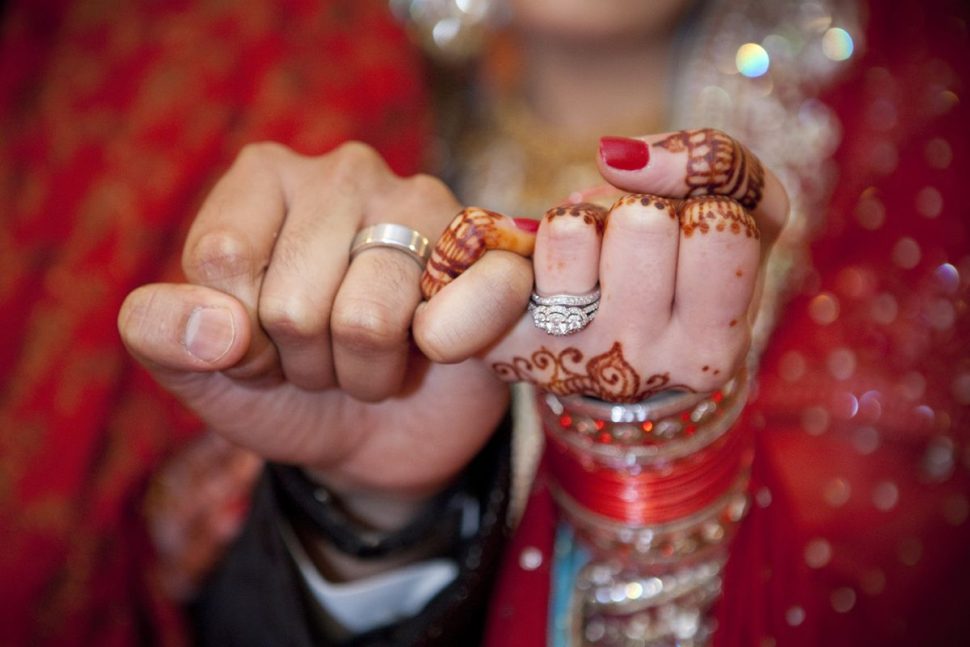
Kumaoni weddings are initiated with high enthusiasm by the engagement ceremony before the wedding. It signifies that the two different people have begun their journey to be a couple. This ceremony involves full excitement and enjoyment. The engagement ceremony in Kumaon is different from what happens in different parts of the country and world. Here, the rings are exchanged among the fathers of both the bride and bridegroom.
Mehndi Ceremony
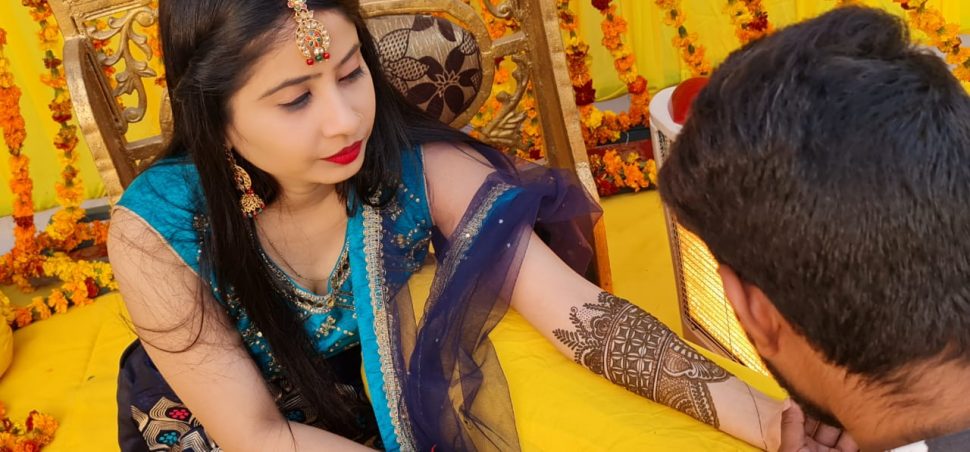
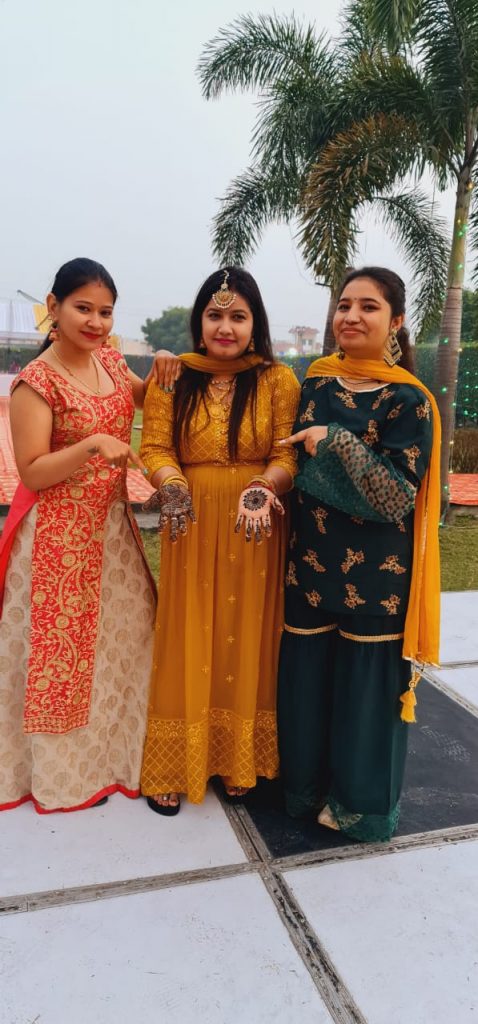
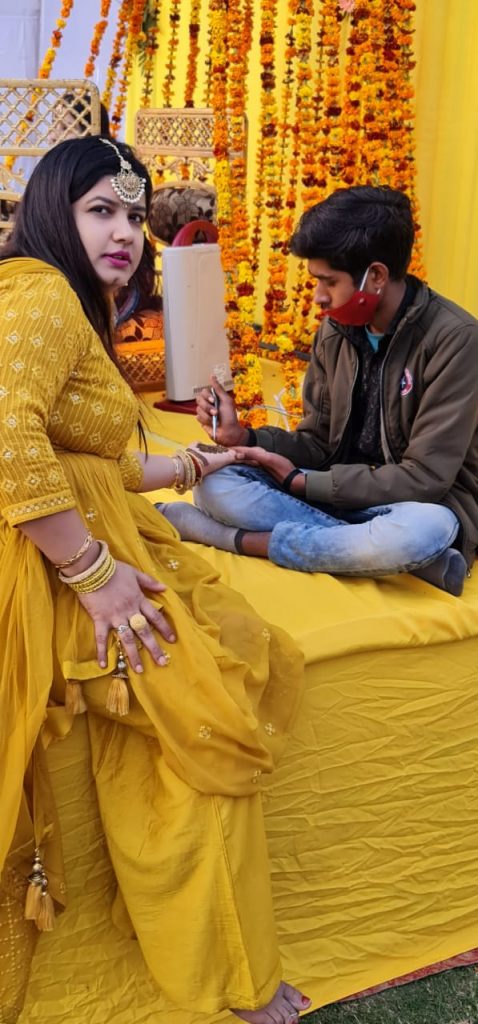
Later to the engagement ceremony, the mehndi ceremony is held. This is quite an amazing and fun ritual. On this day, henna is applied to the bride’s hands and feet by a mehndi artist whereas the groom also follows this ritual but he doesn’t apply much of that. The ritual is celebrated in both the family. It is believed that the deeper the color of henna comes out, the stronger is the relation and loving husband. Many people like to get henna applied by family members while some go for the mehndi artists.
Haldi Ceremony
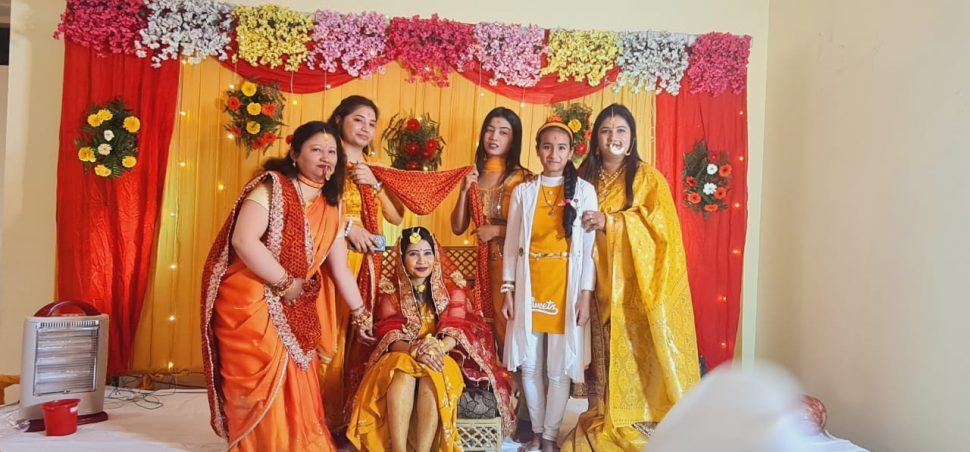
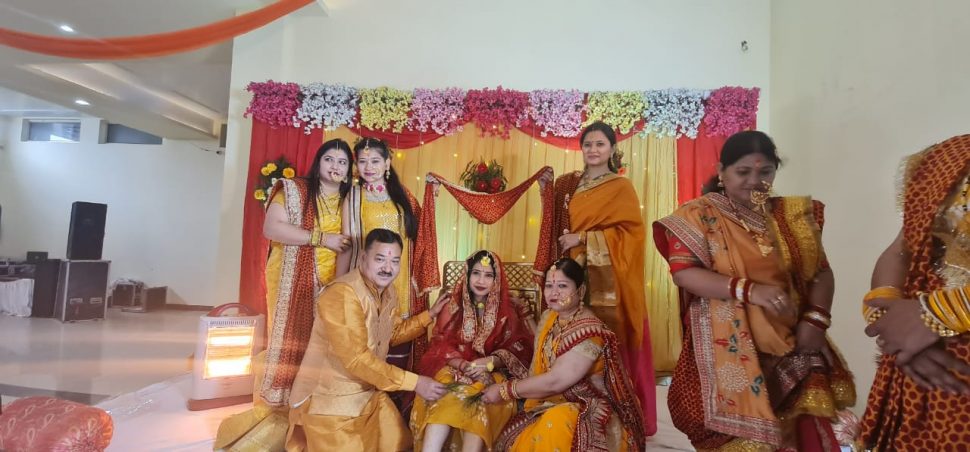
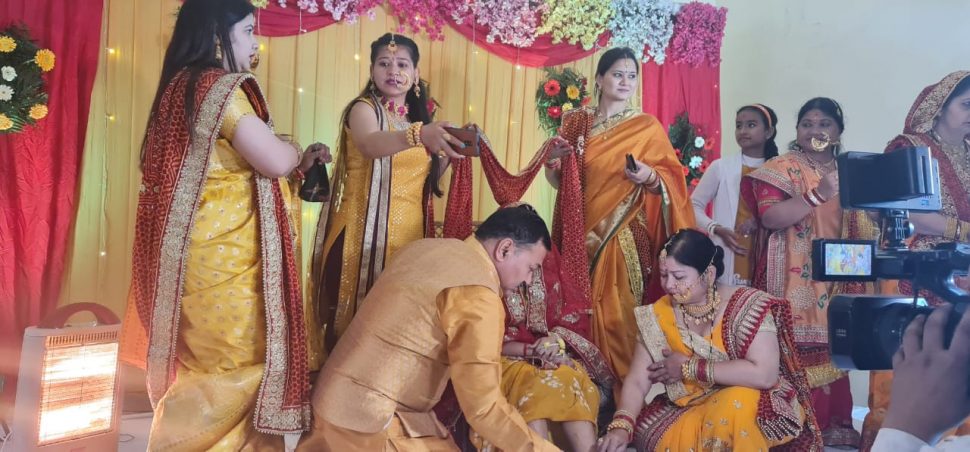
The next morning after the mehndi ceremony, the Haldi ceremony is held. In this ceremony, Haldi, i.e. turmeric paste is applied to the face arms, and legs of the bride and groom with few twigs of grass. Both the families at their residence celebrate this ceremony with jokes, dance, music, excitement. It is really a great ritual performed with high josh.
Ceremonies During Wedding
Ganesh Puja
Lord Ganesha or Vighnaharta is known for being the Lord who is a remover of obstacles and hurdles, therefore is worshipped everywhere in India before the commencement of any fortuitous event. Whether it is the opening of a new business, hosting any pooja, or inauguration of the new shop, Lord Ganesha is worshipped always. Wedding is again one of the most important phases of human life, the people of the Kumaon region, start the rituals of Kumaoni wedding after performing Ganesh Puja.
Suwal Pathai
Suwal Pathai is a unique ceremony coming from the Kumaon region of Uttarakhand and is particularly noticed in Kumaoni weddings when the wheat flour is pummelled into the dough and then turned into circles just like any flatbread but thinner. It is later dried under the sun rays after plunging in dry flour. Once they are completely dried, they are fried and then offered to the gods as a Prasad.
Duliagarh
Duliagarh ritual or rasm in Kumaoni people is really important as the groom who is considered as an incarnation of Lord Vishnu, the father of the bride along with a priest worship him. The Father of the bride then washes the feet of the groom and then offer him sweets or “pithya”. This ceremony goes on for over 30 minutes after the baraat (or groom’s cortege) has arrived at the wedding venue.
Varmaala
After the groom has arrived and the rituals are performed, he is taken to the stage where he sits, and following him the bride is also taken there. After that, the exchange of var mala of garlands takes place among the bride and groom. During this auspicious moment, the friends and family members from both the side accompanies them on the stage and help them cherish their moment. Then the exchange of Jai Mala happens among the bride and groom followed by huge joy, cheerfulness, and applause from the crowd with some jokes and laughter.
Photo session accompanied with dinner
After exchanging the Jai Mala, the camera begins the exclusive photoshoot of the Bride and Groom by the professional photographers and takes their clicks with the friends, family, and relatives present at the wedding. After the photo session, there occurs a dinner feast where the entire guest making their presence enjoys the food. After the guests have eaten the food, they go to the dance floor to set it on fire.
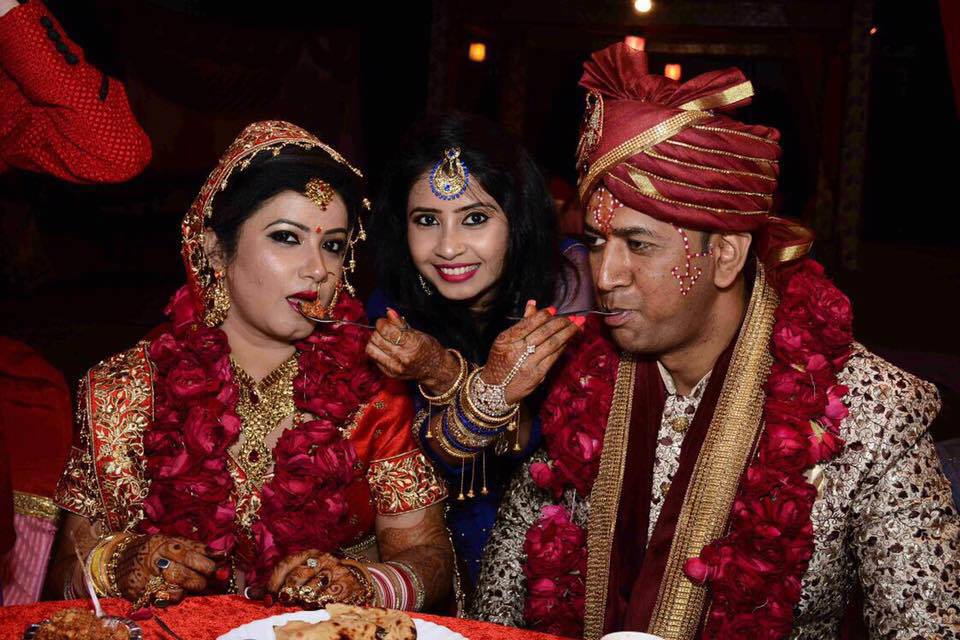
By the time, the guests have done their dance and dinner; it’s time for the couple to have food together where they are also accompanied by their close friends, loved ones, and family. This turns a simple feast into a big-shot family moment.
Kanyadan and other ceremonies
Once the social gathering and ceremony are done, it’s time for the priest to come and take over the rituals that will declare the bride and groom to be husband and wife. Here comes the Lagna i.e. the fortunate time or Muhurat on the basis of stars position. The ceremony lasts for some hours until the next morning.
This is the time for the most emotional moment for the parents of the bride and bride herself, i.e. Kanyadan. Kanyadan in Hindu traditions is considered to be the biggest donation or charity one could ever make and not all get such a great opportunity. The bride’s parents keep a fast on the wedding day of the girl. After this ritual, the bride and groom as declared to be the couple or husband and wife and the girl is now a part of the new family.
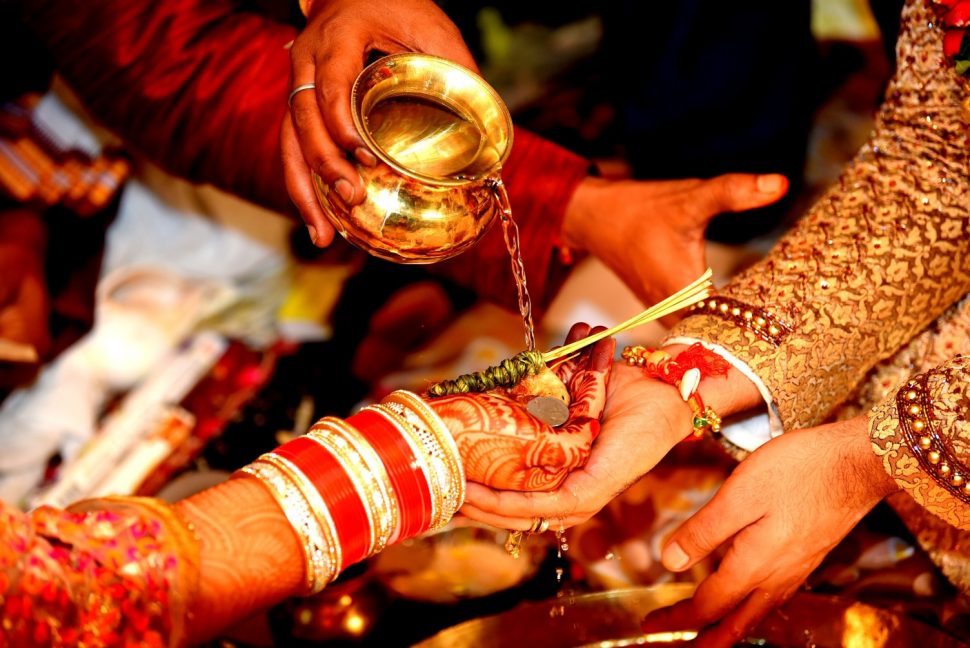
Saptapadi
After the kanyadan, the bride and groom have to take seven circles standing in the queue around the sacred fire by taking the seven wedding vows. In the first four circles, the groom is before the bride and take the circles and then the last three circles have the bride in front of the groom and then they take the circles. Now once this ritual is over, the couple is pronounced as a happily wedded husband and wife.
Vidaai
This is the last ceremony in the family, which is an emotional moment for the bride and her family. With a heavy heart, the parents of the girl have to say goodbye and send her to a new place, new home, and in a new family. The place where she had spent all of her life, where she took birth, where she has grown, where she has played and all her relations, emotions she has a bond with, will be left now.
When a father is bidding Vidai to his daughter, he is actually sending her on a new journey. This also signifies the end of a girl’s journey as a daughter and the commencement of her journey as a wife, daughter-in-law, sister-in-law, and various other new relations.


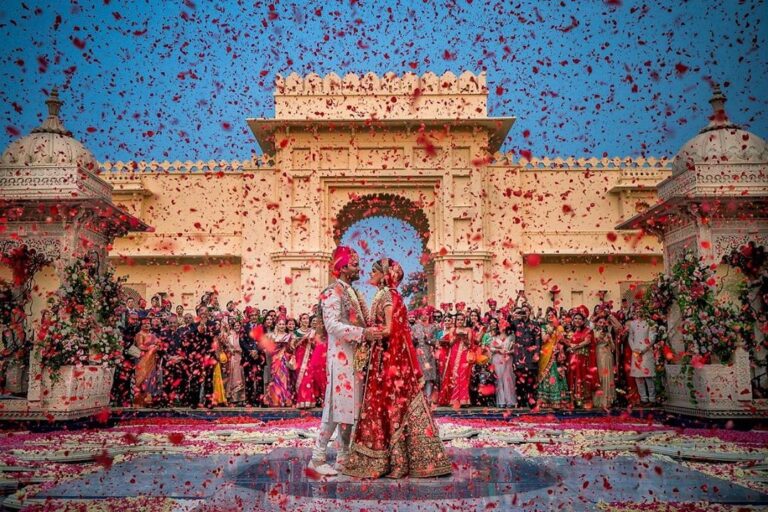
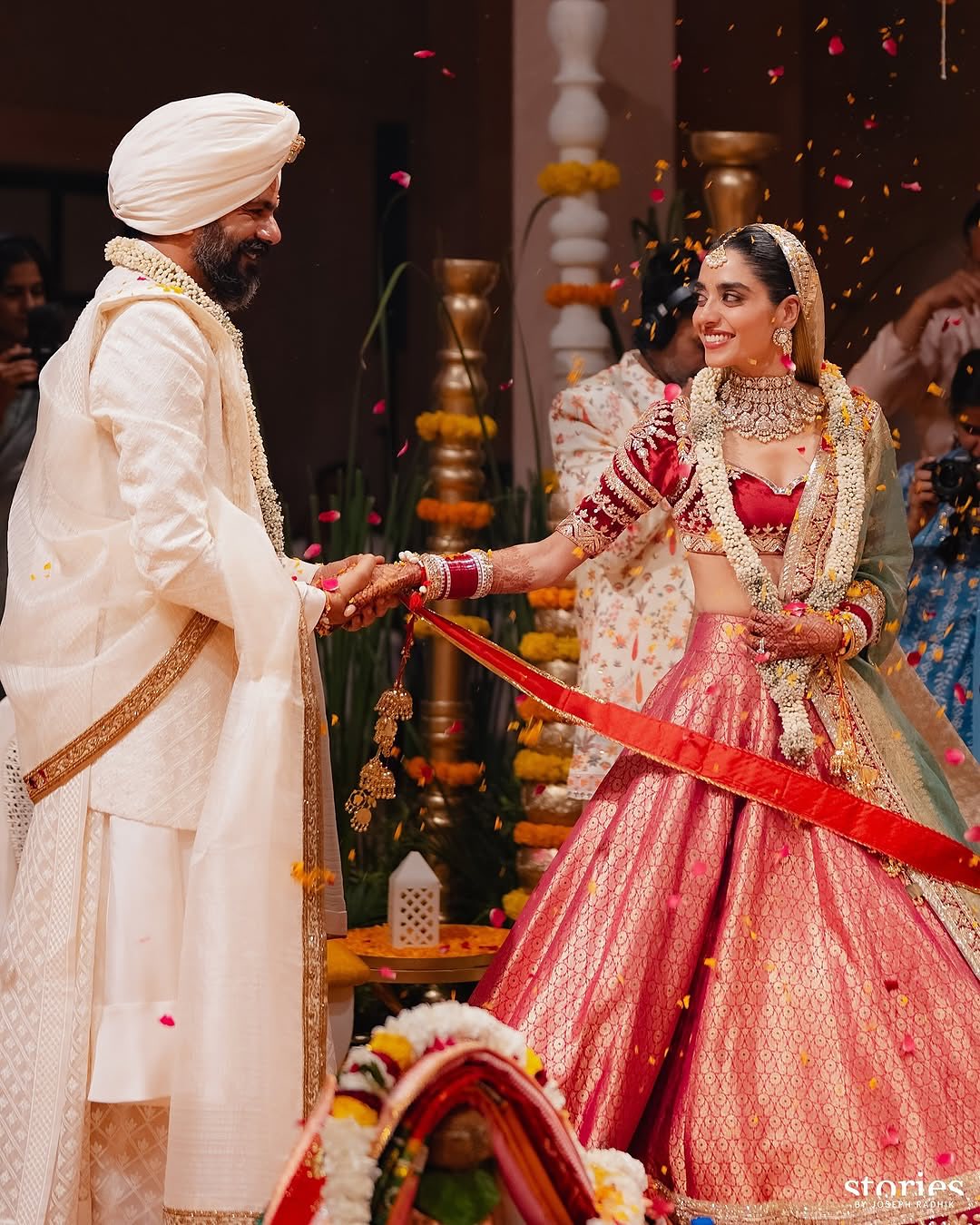
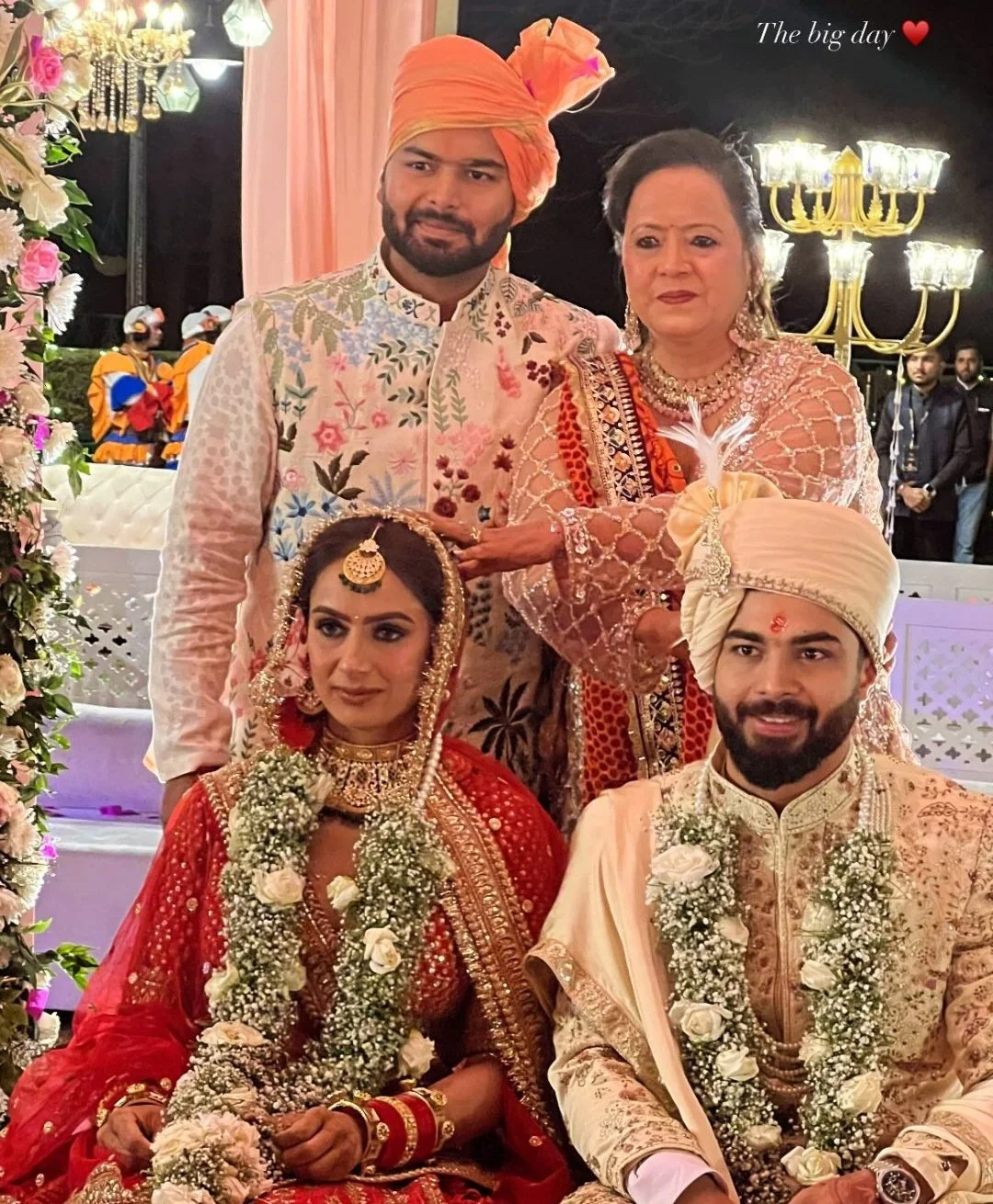
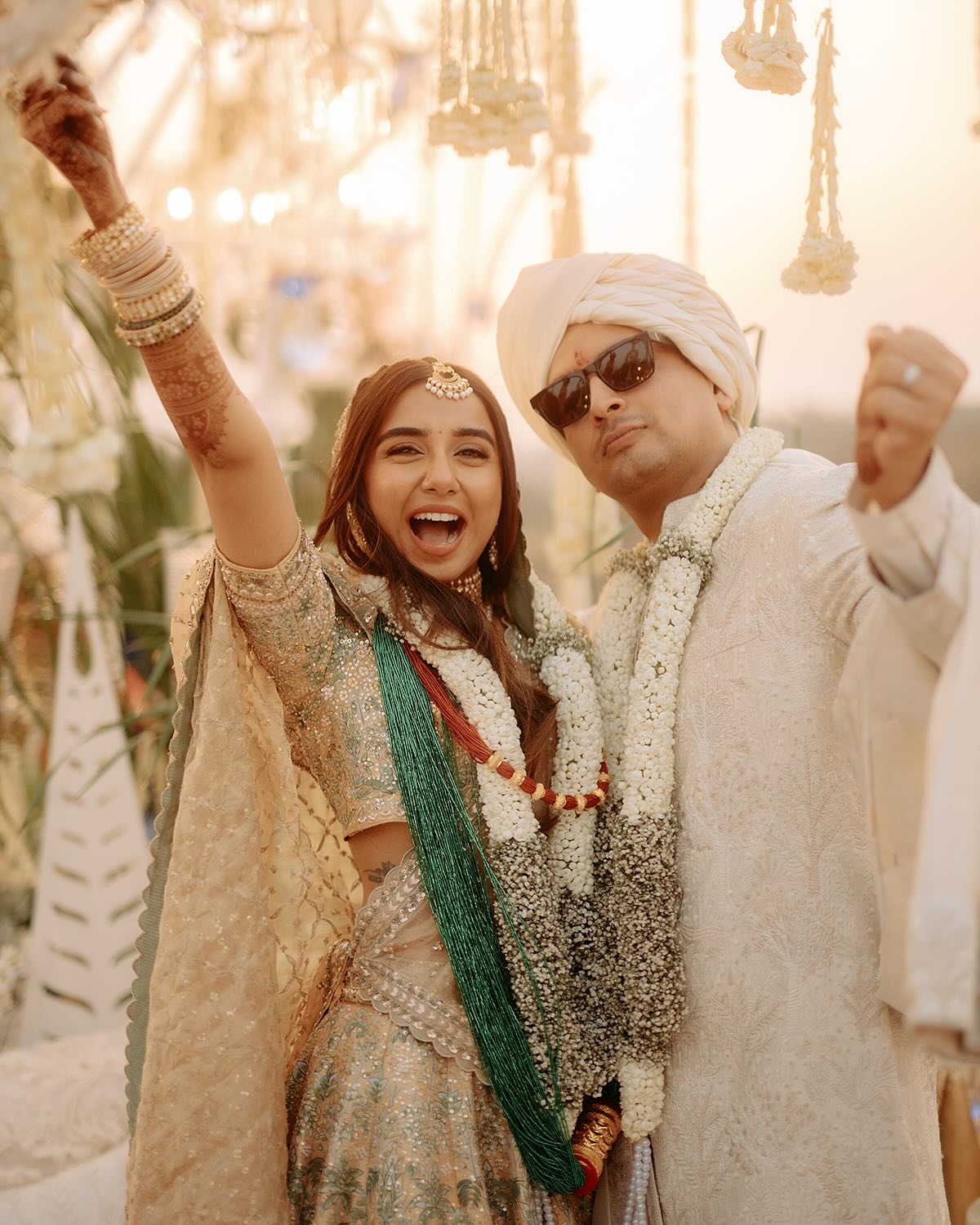
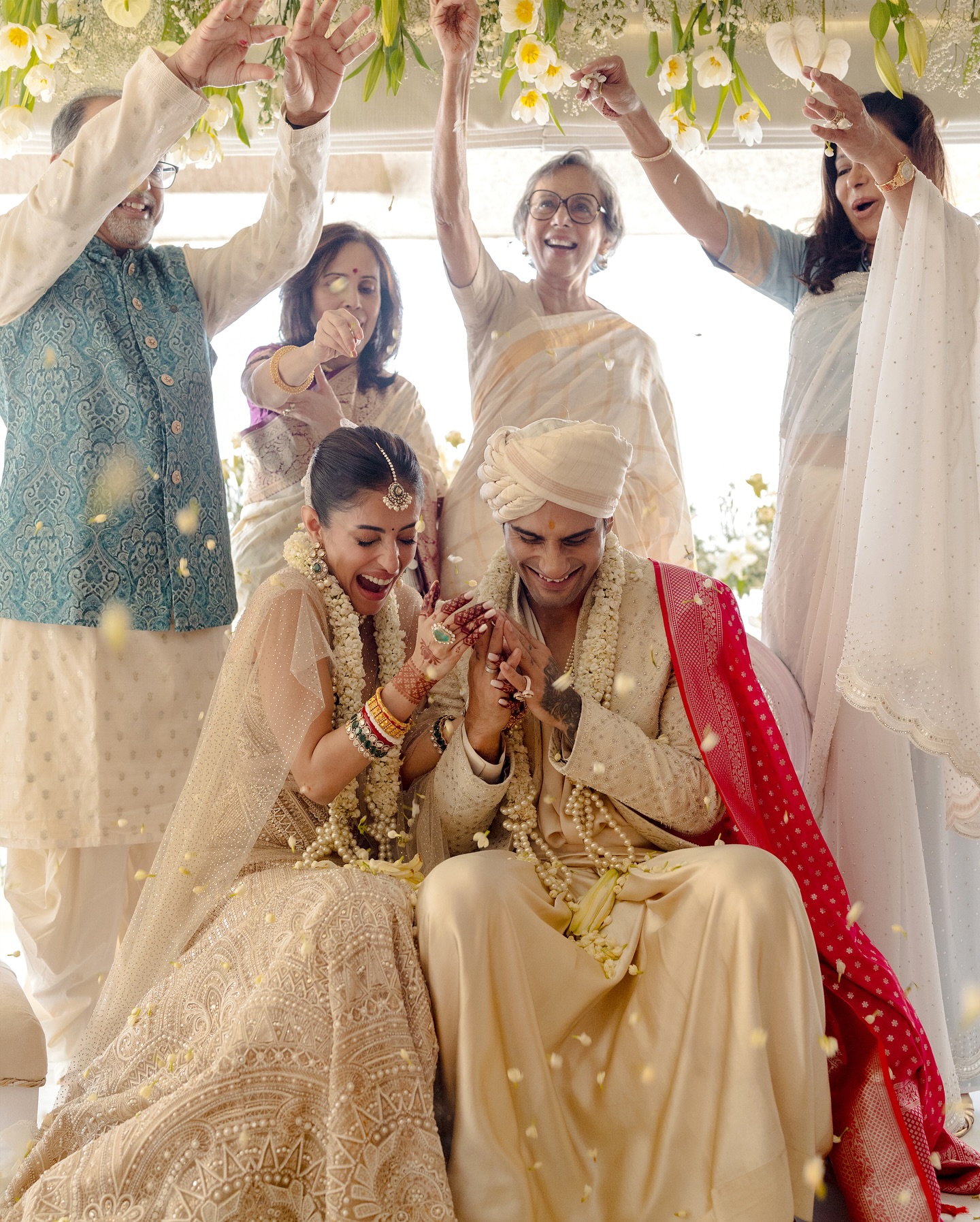
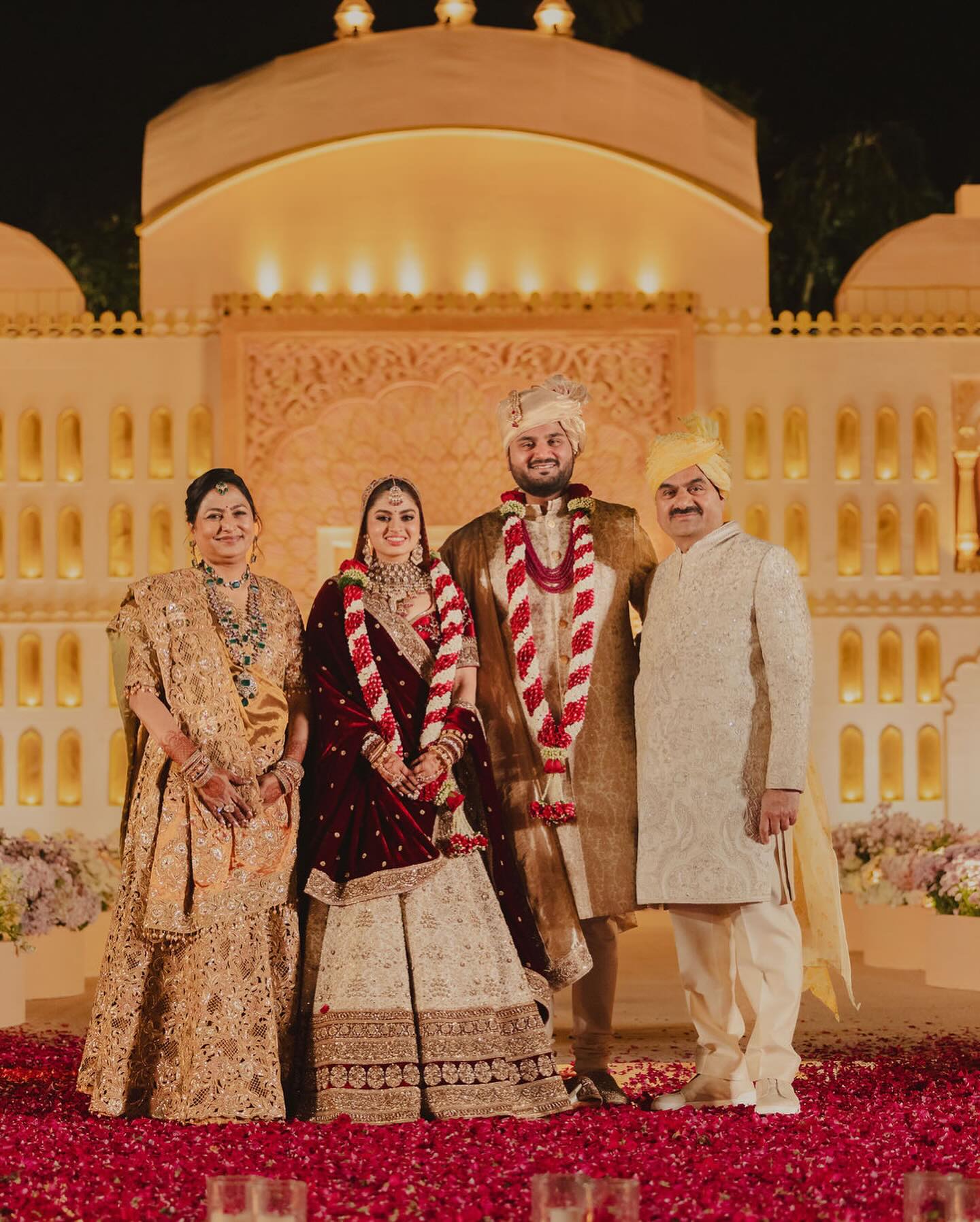
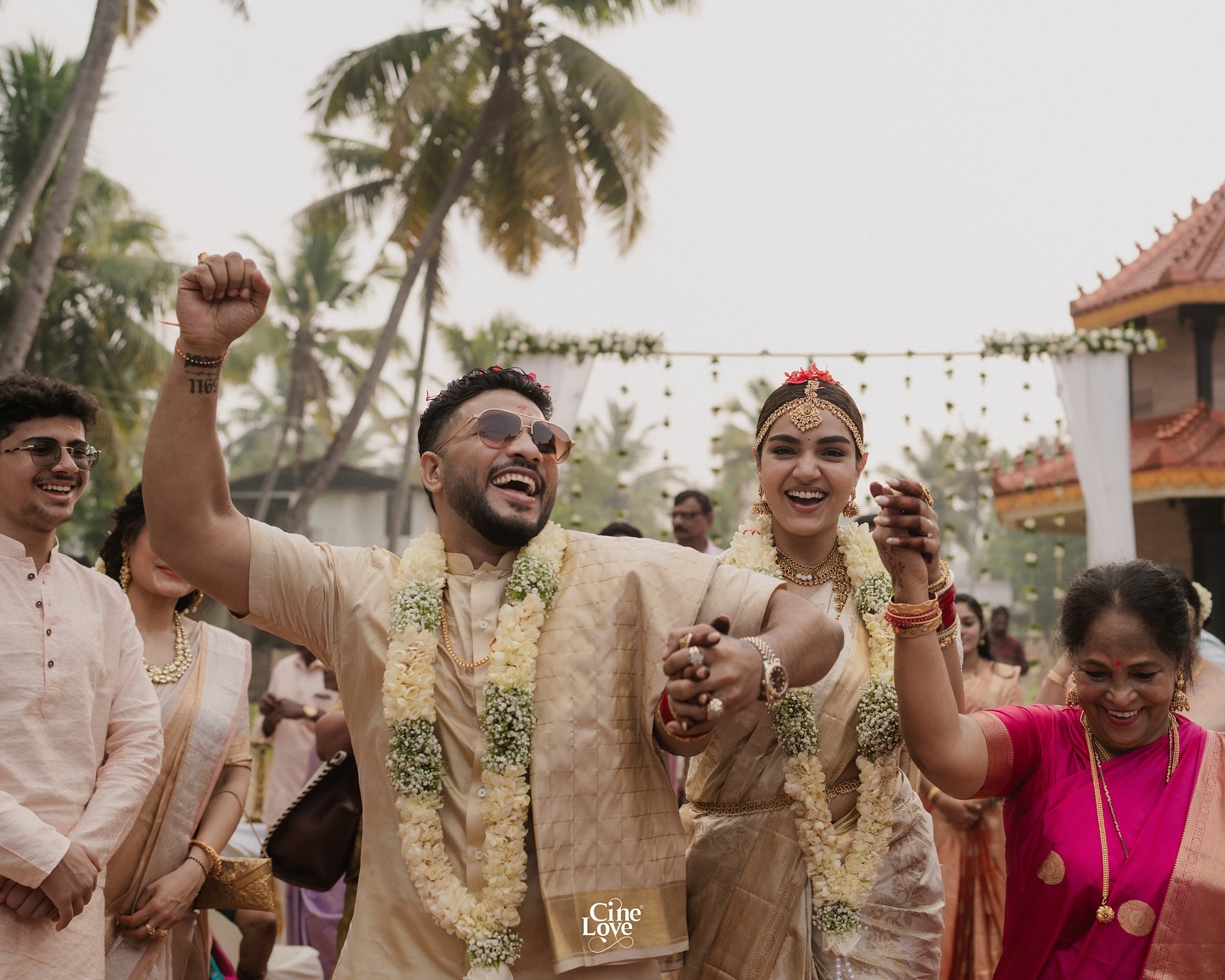
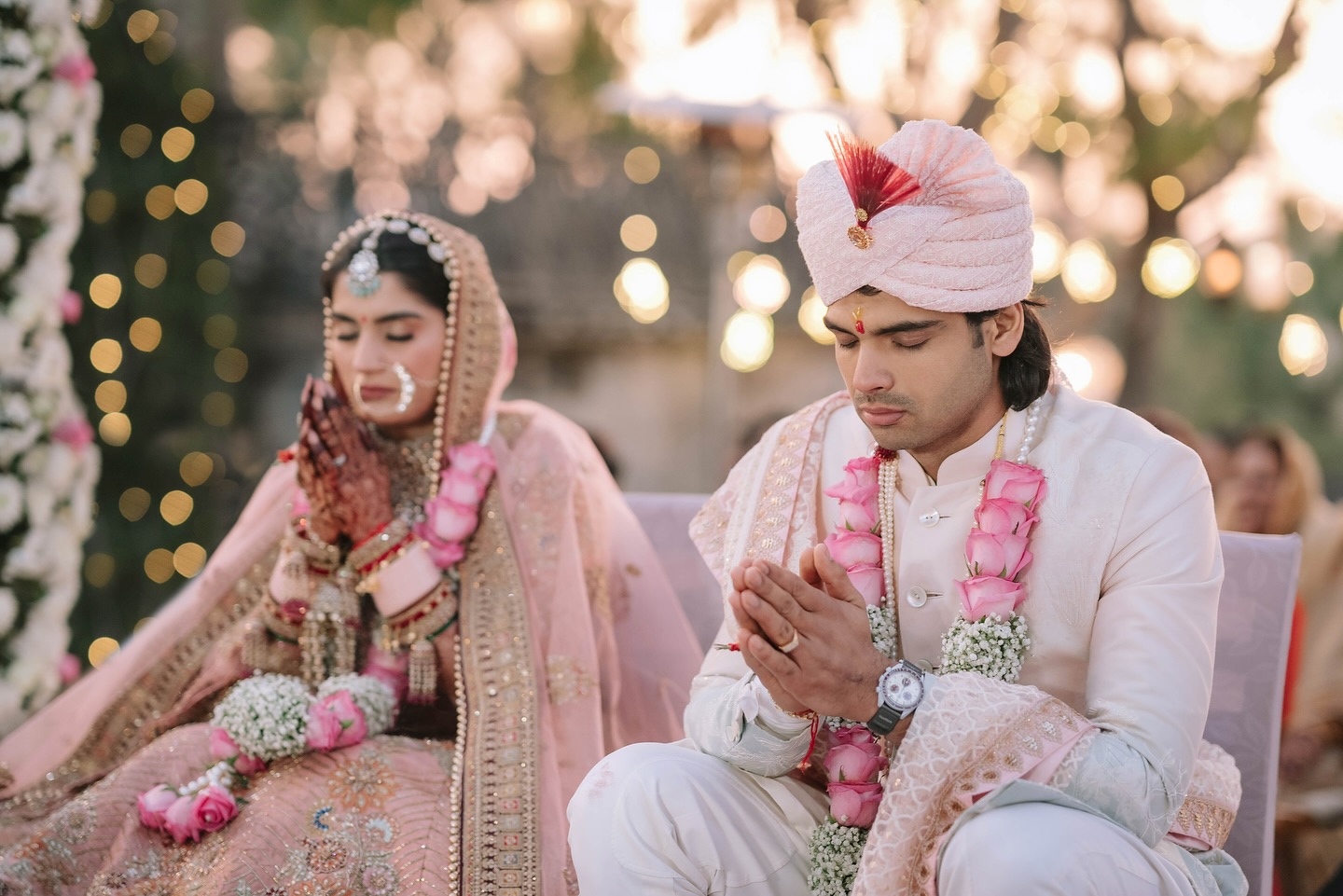
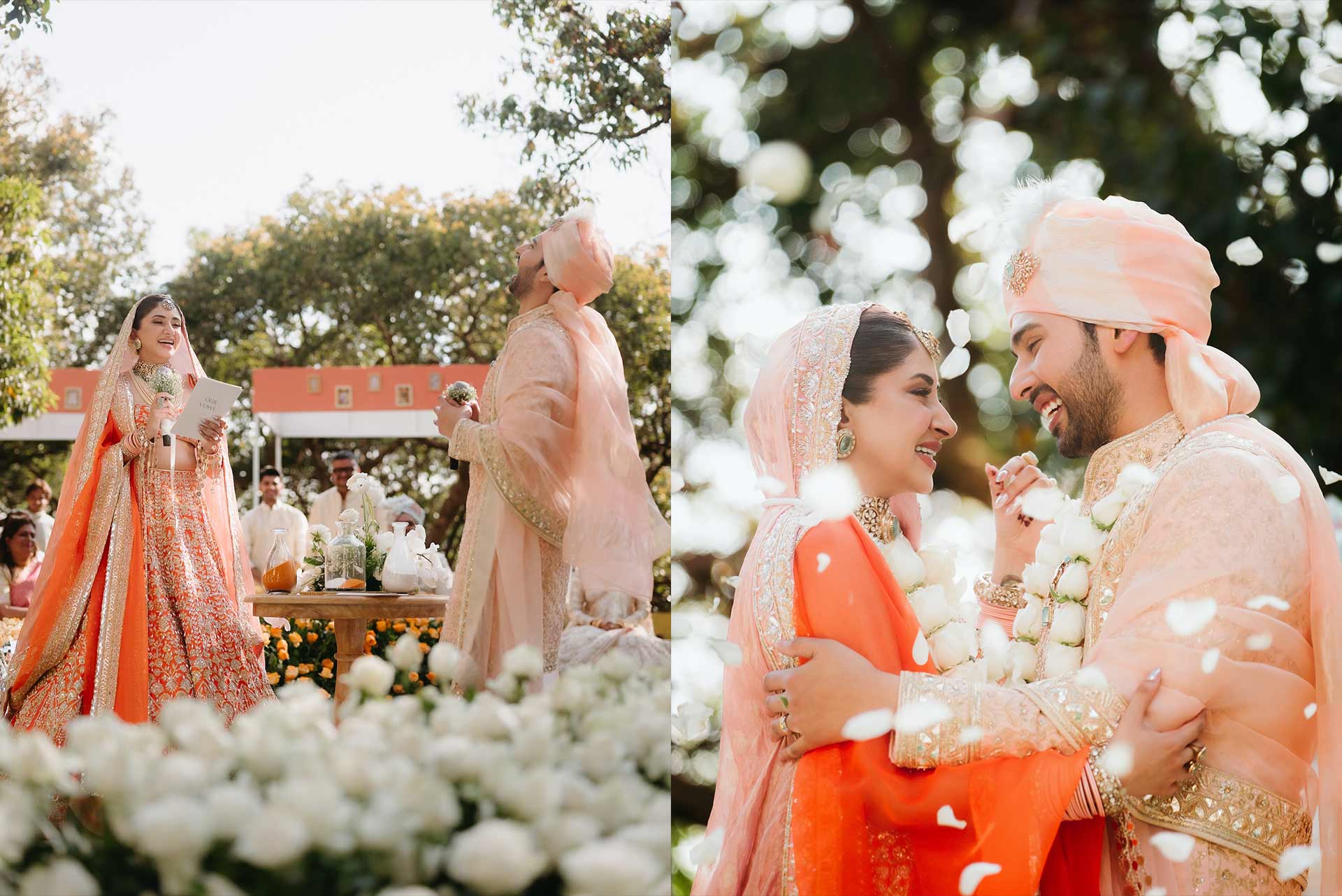
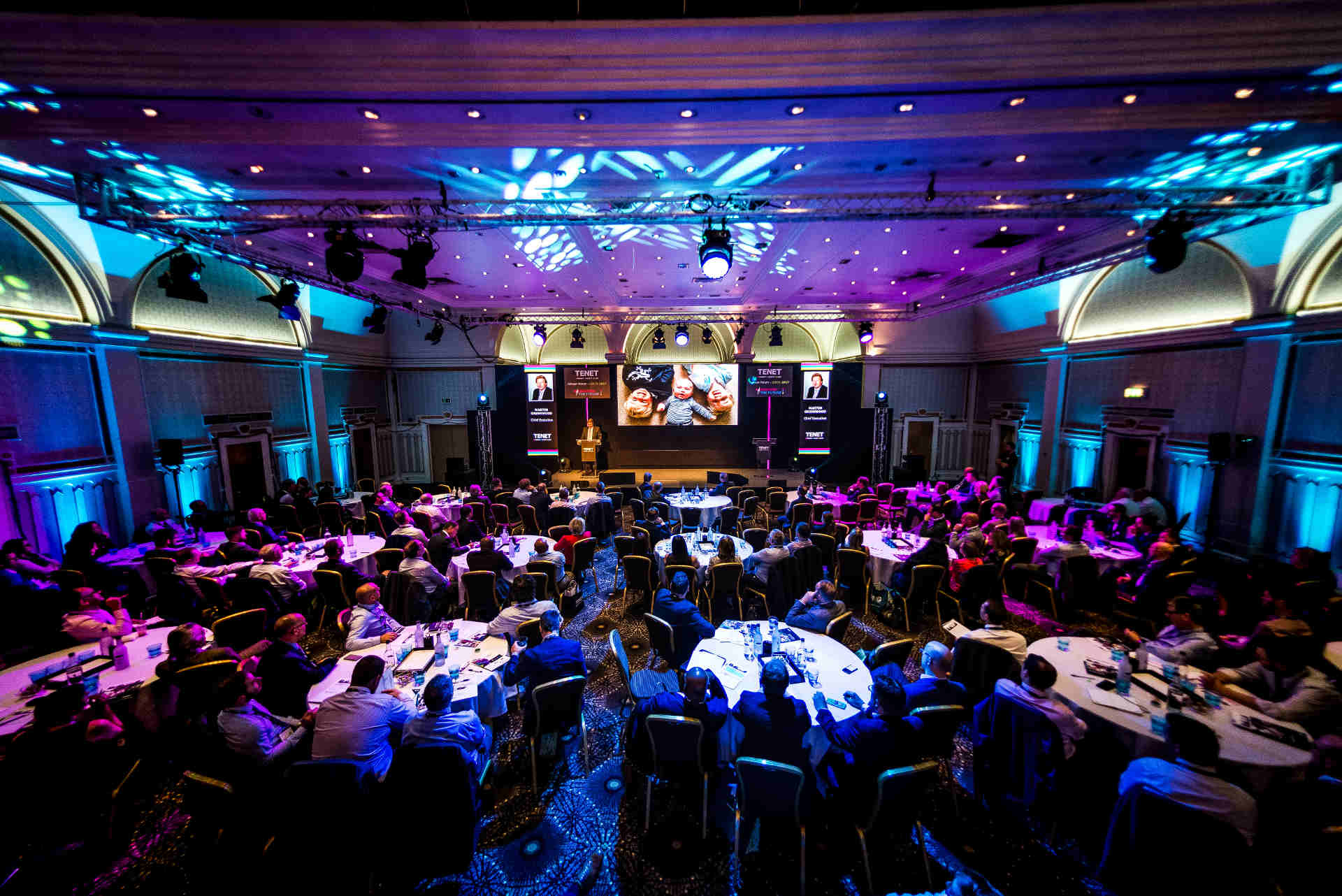
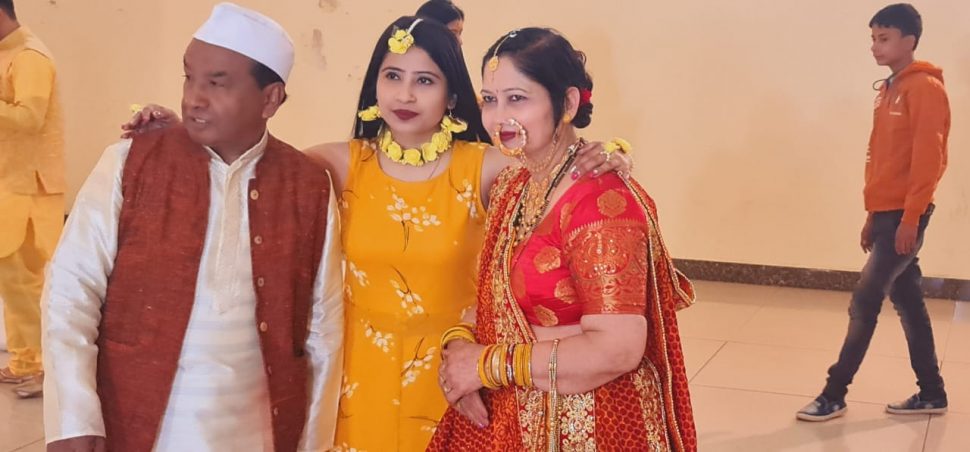
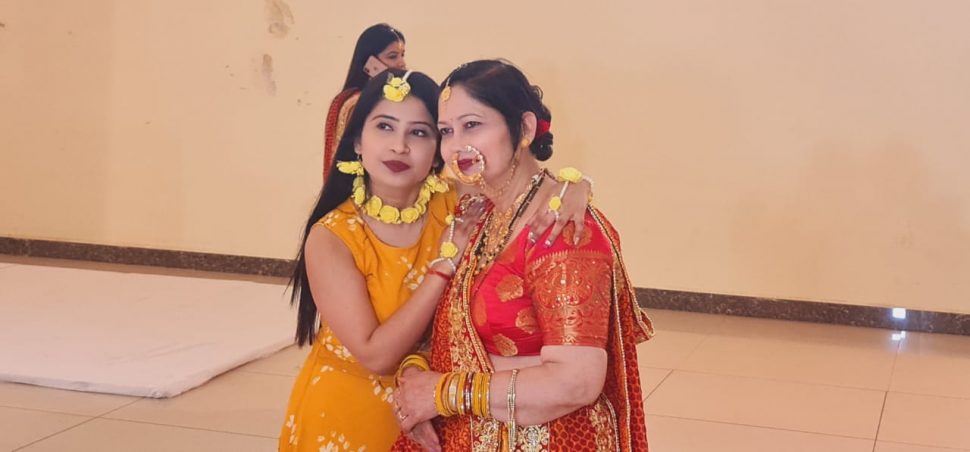
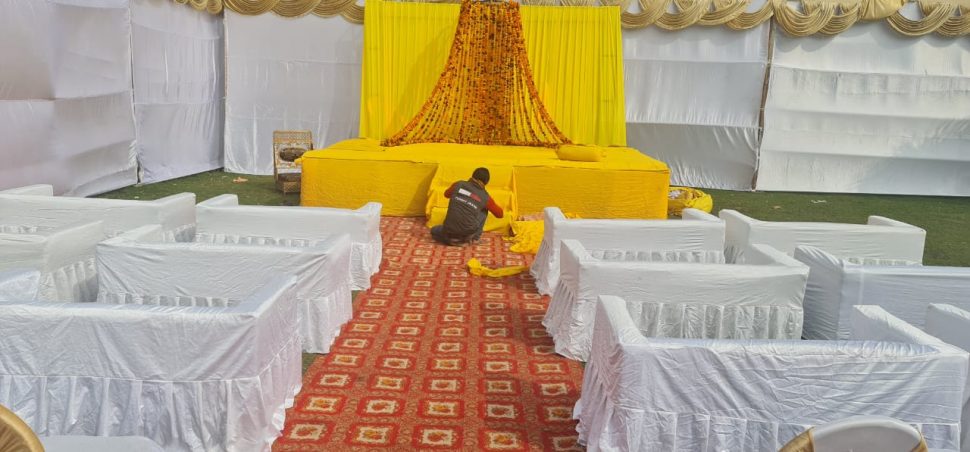
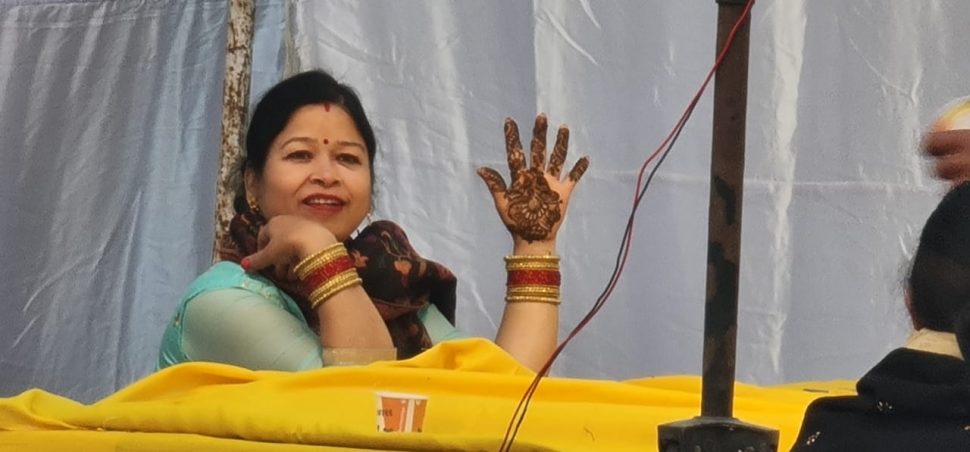
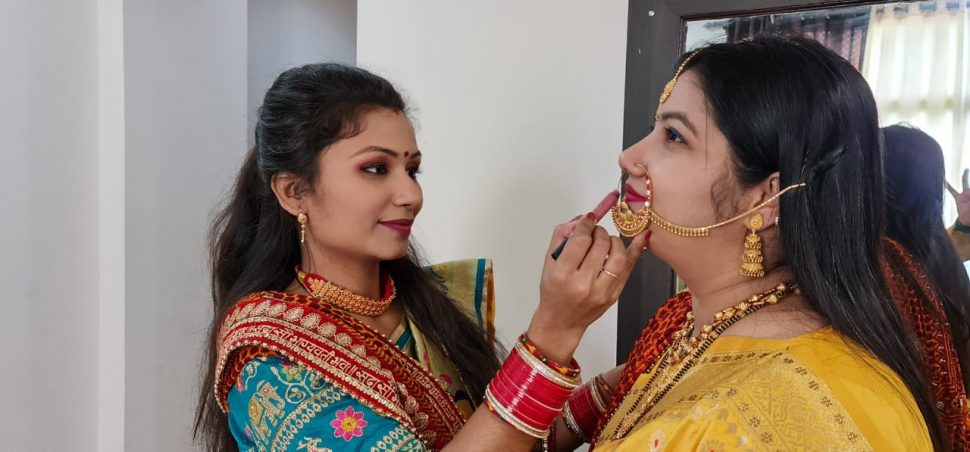
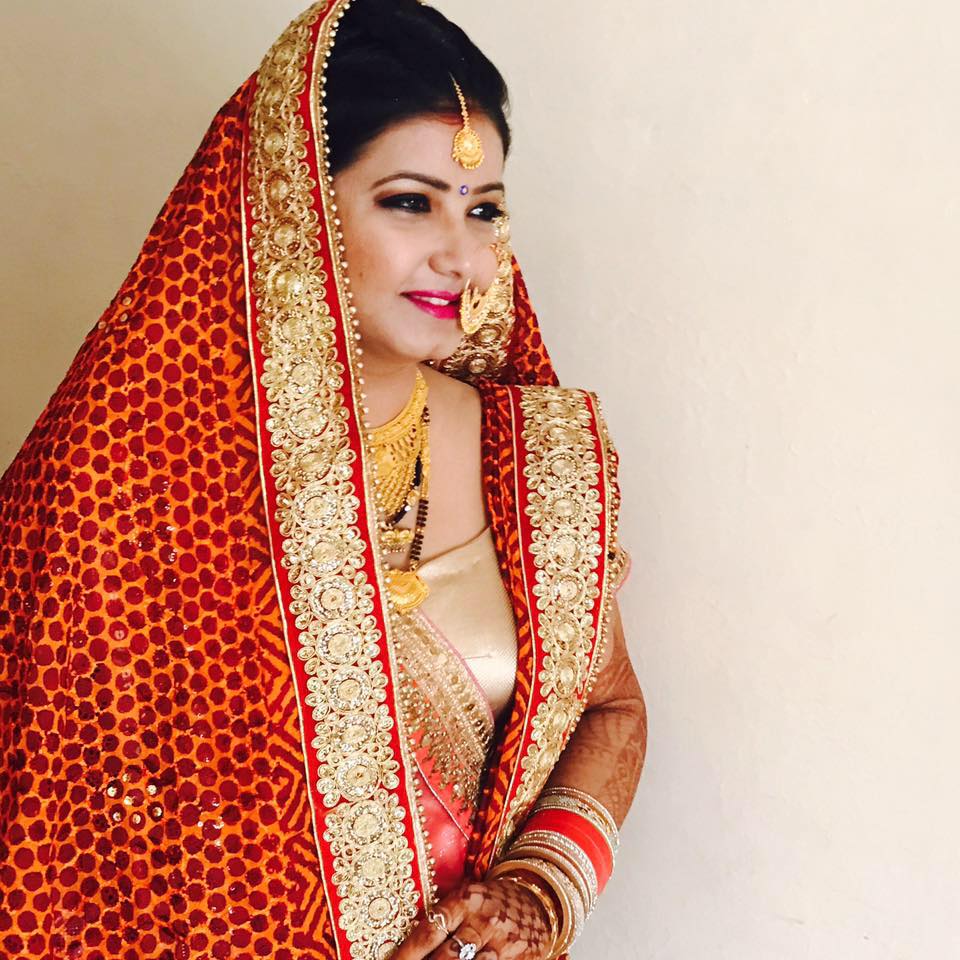
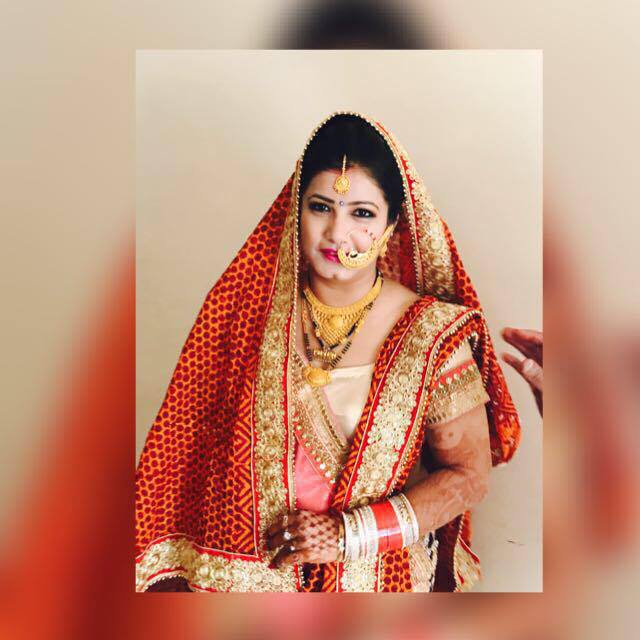


Your feedback